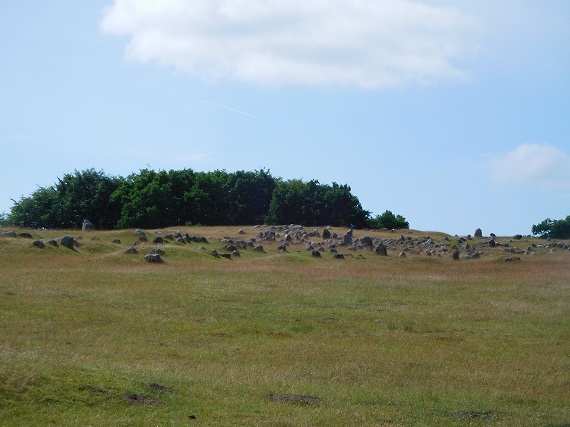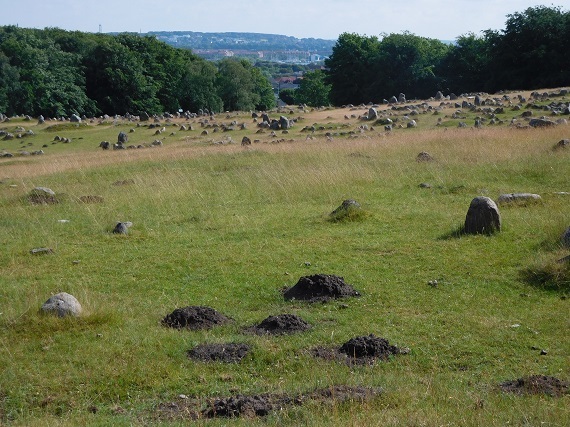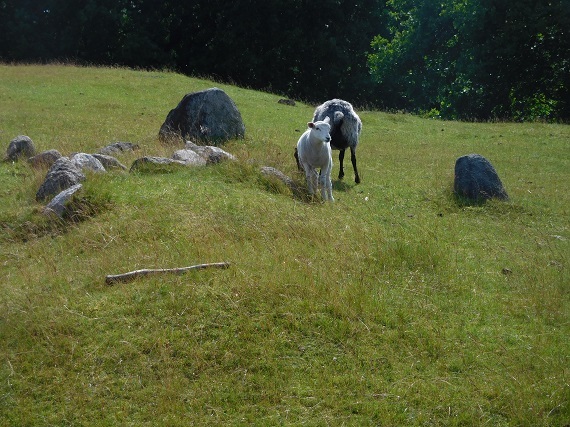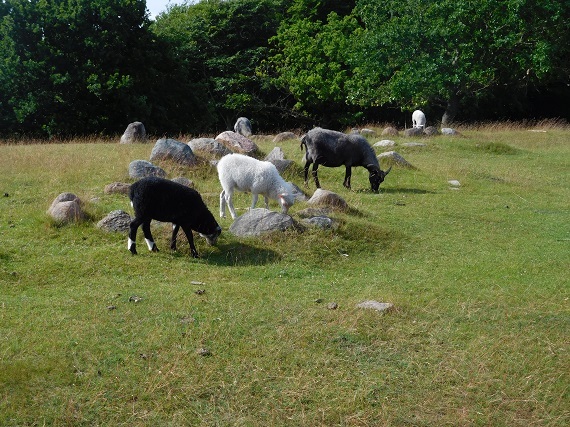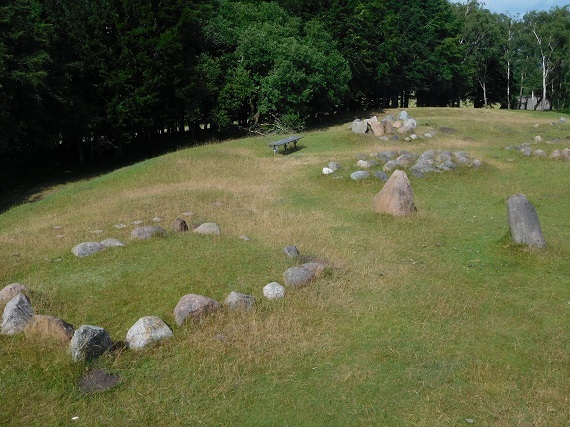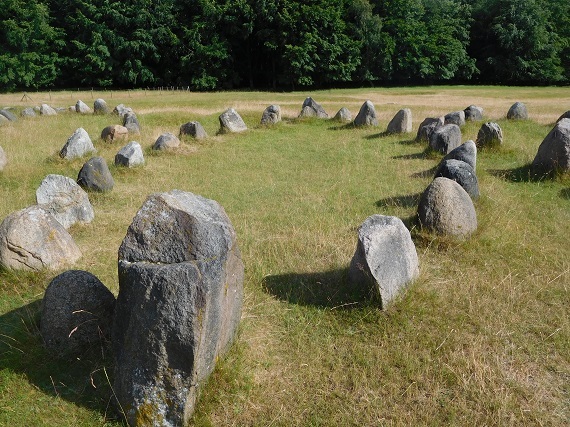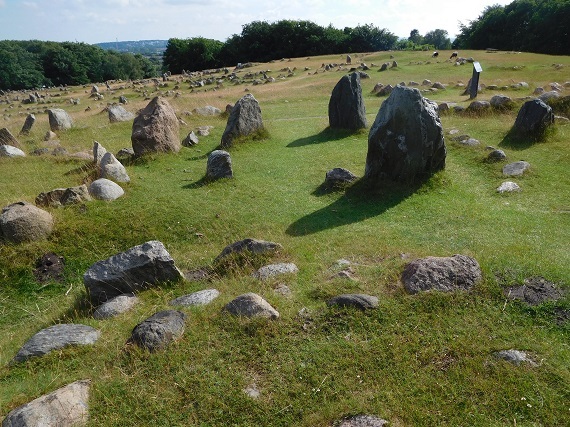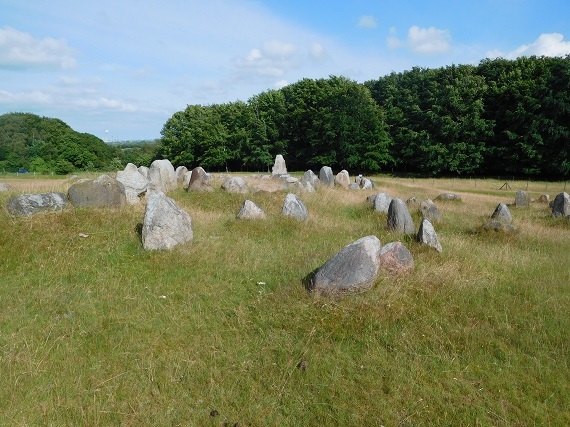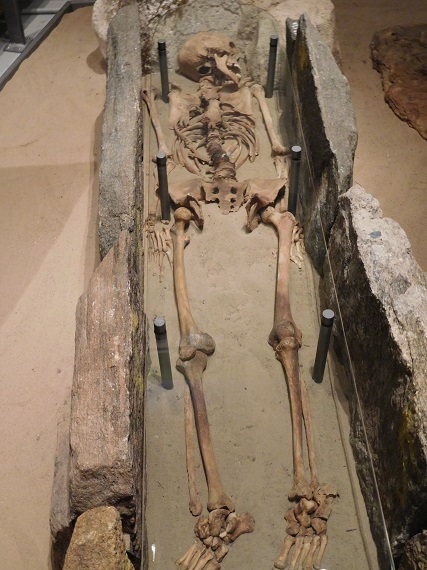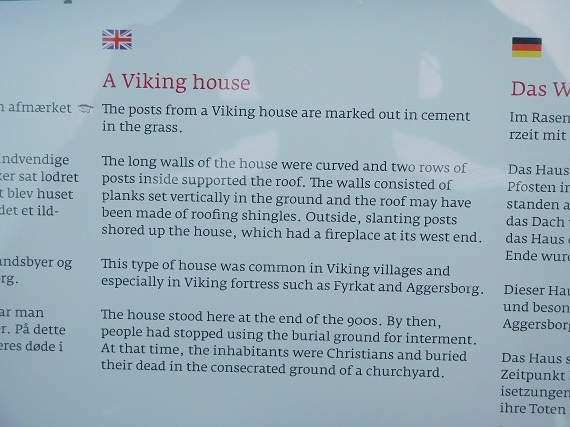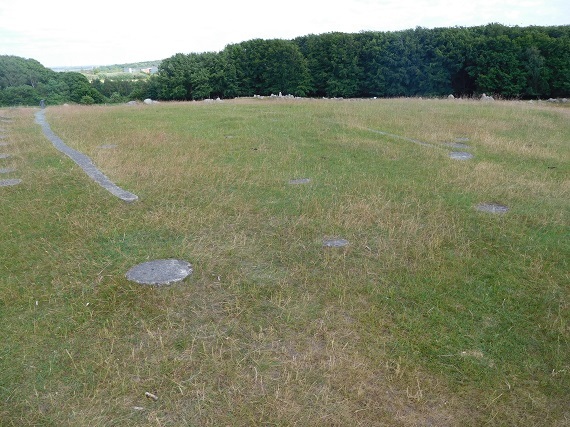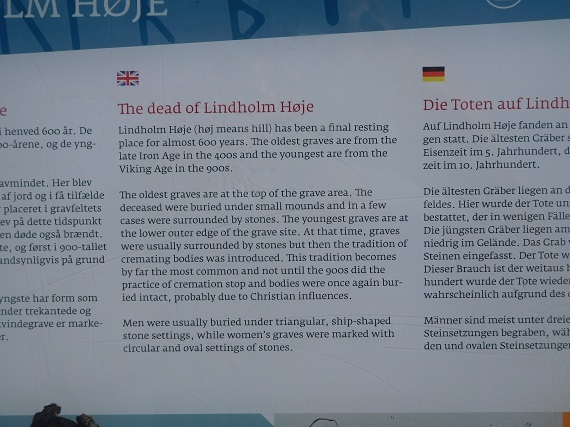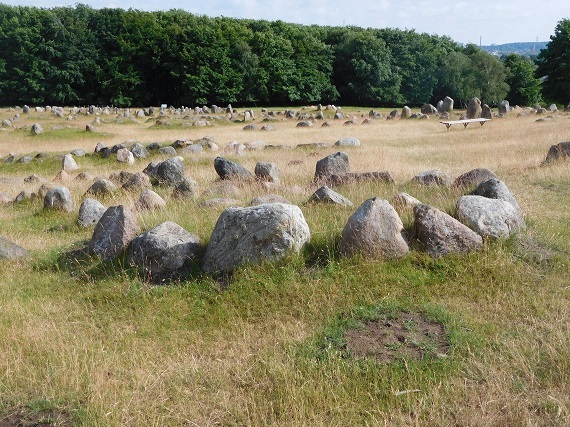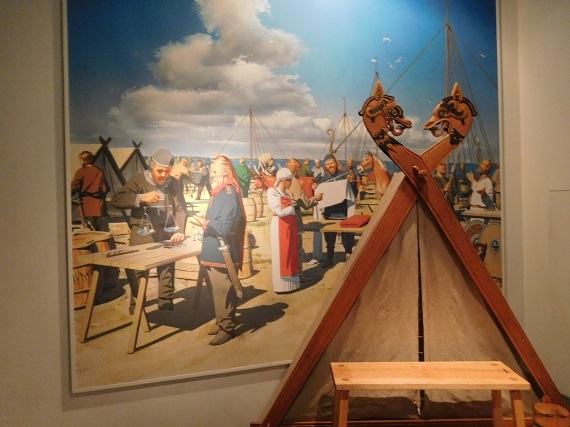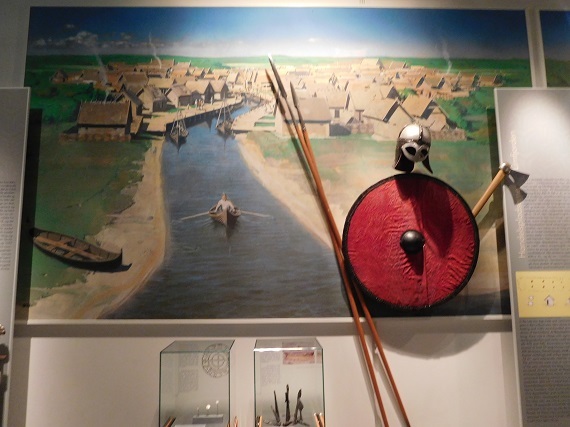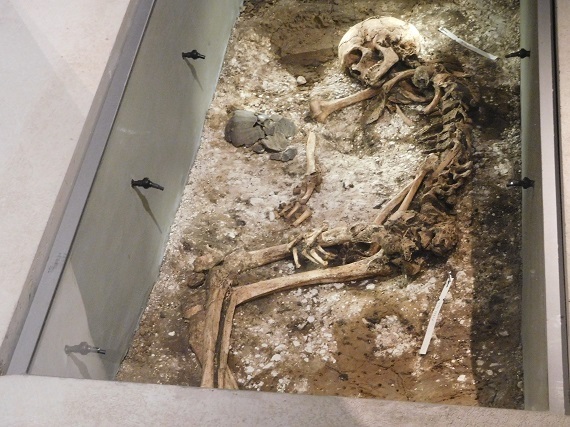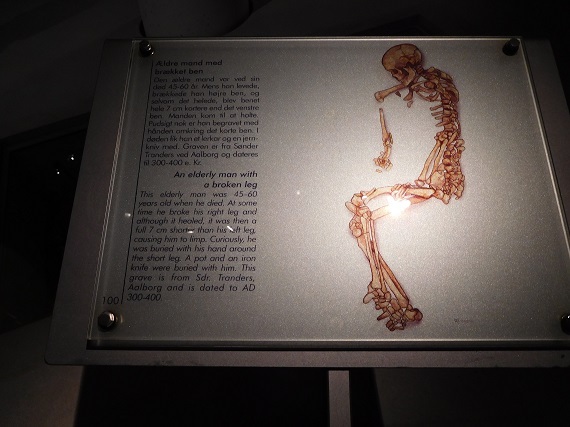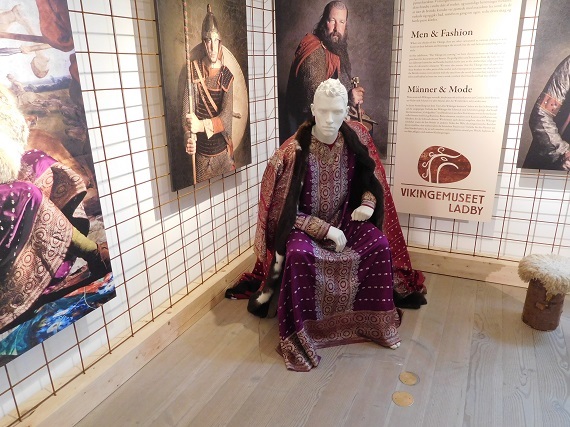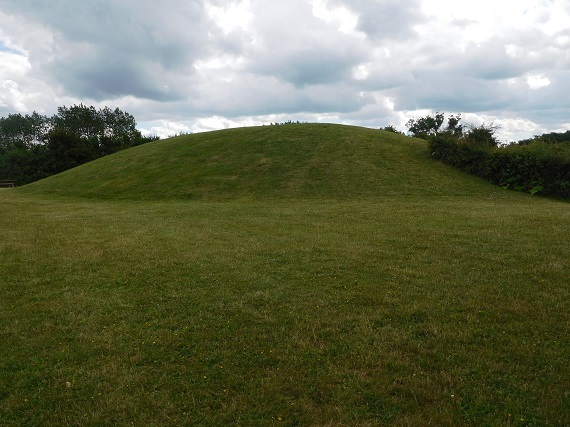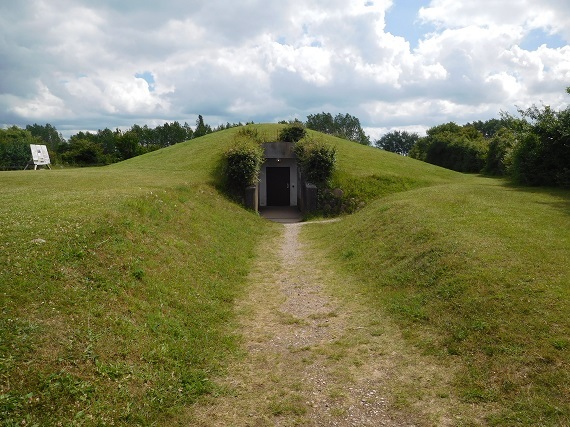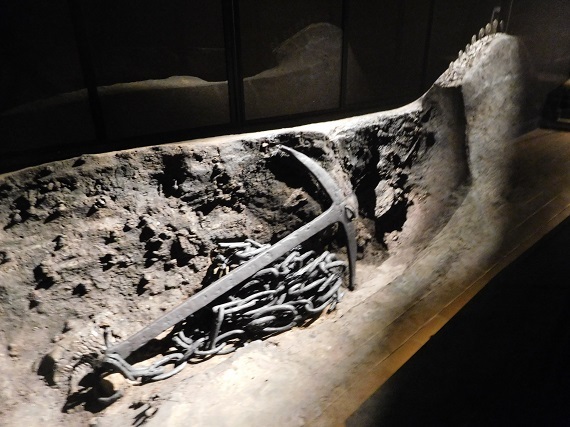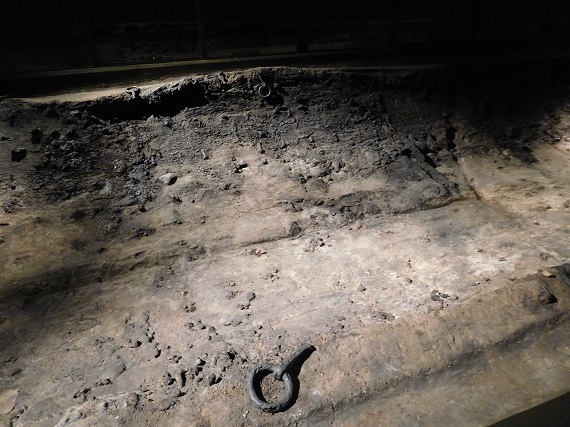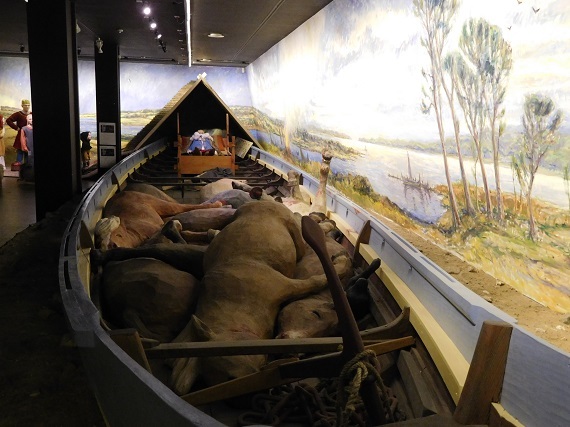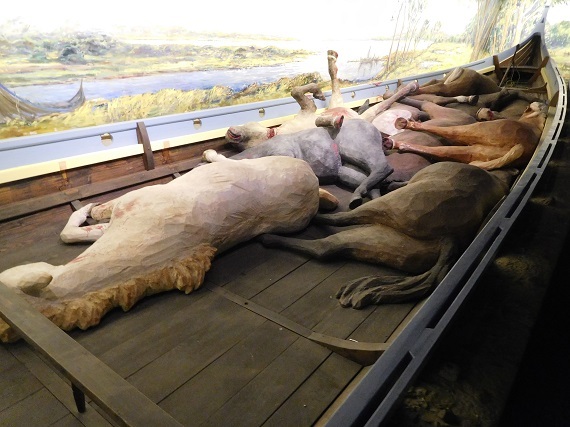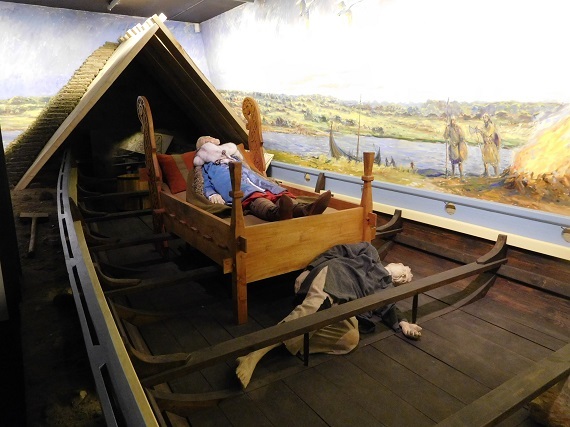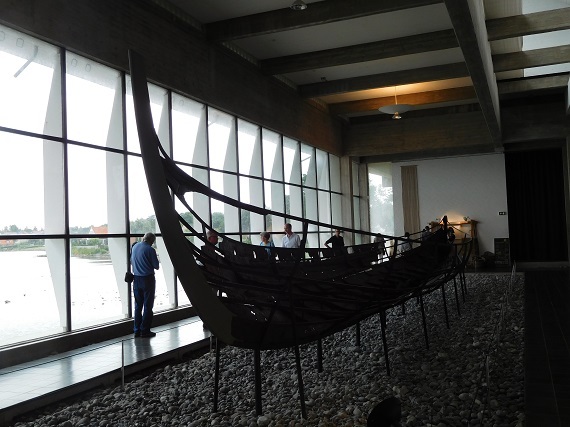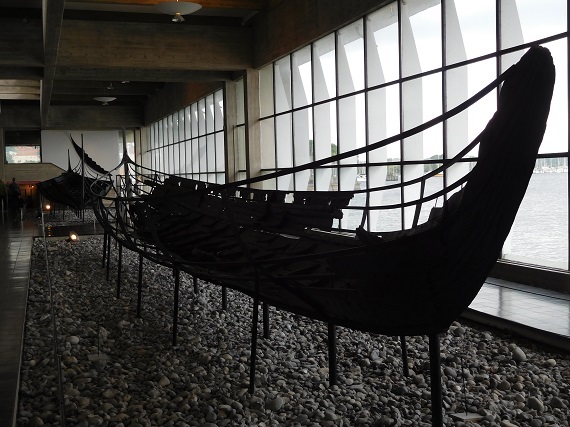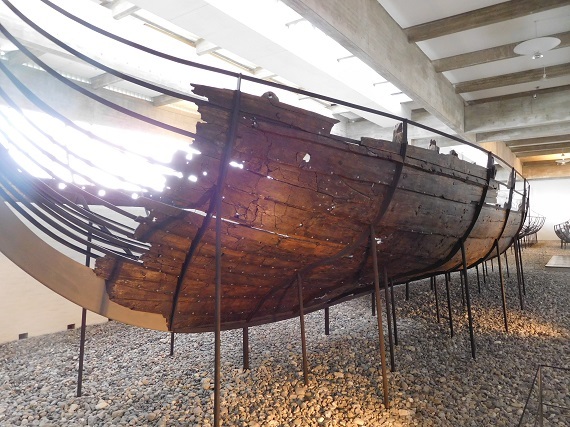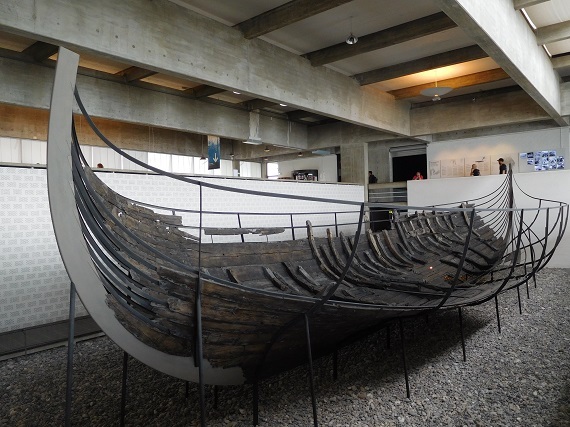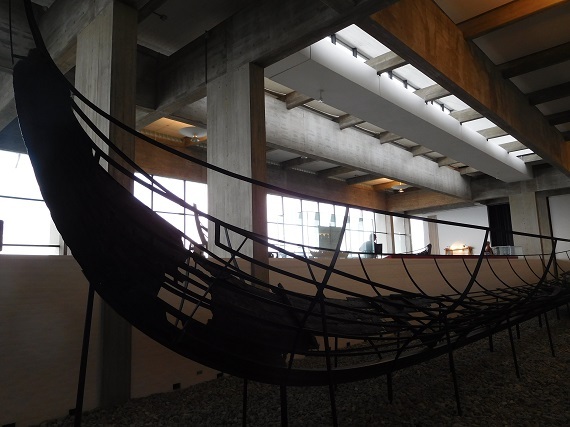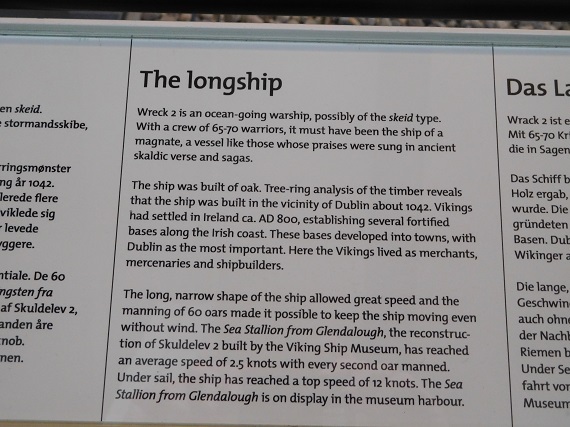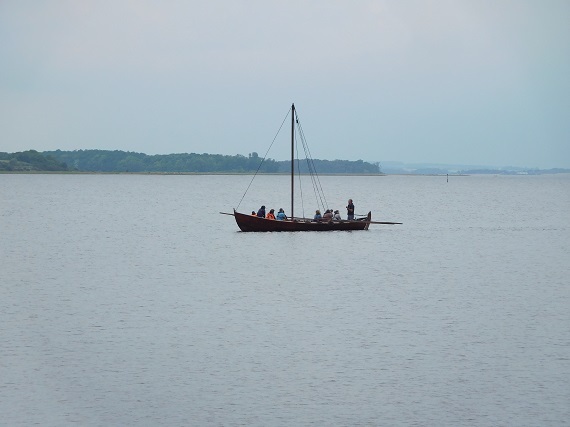Looking out at the grassy expanse at Lindholm Høje on Denmark's northern Jutland peninsula, you might think it's just a pile of stones left to rest here and there without rhyme or reason. Horned rams, sheep, little lambs and even one baa-baa black sheep root around the rocks that spread over the rolling field.
But look more carefully, perhaps from an elevated viewpoint, and you'll see the stony outlines of circles, ovals, even ships.
For this green field on the northern side of Lindholmfjord from the historic town of Aalborg contains some 700 graves from between 1,600 and 1,000 years ago, many from the golden age of the Vikings.
Most were cremations but there are also inhumations, as evidenced in the site's excellent little museum
Remnants of long houses and a village as well as tools, ploughshares, animal bones, pottery and handicraft have been preserved thanks to the sand drifts that piled over them throughout the long centuries that followed.
It's not by chance that Vikings settled here. The surrounding bogs provided bog iron for their super-strong weapons and tools, and the fjord that flows right across Jutland - basically flat and nothing like its mountainous counterparts in Norway - served as a Viking-era watery autobahn from the Baltic to the North Sea for wondrous raiding rampages in England and points further south, right into the Mediterranean.
So let your imagination run berserk - and that's appropriate here because, as we all know, berserk comes from Old Norse berserkr (ber for bear and serkr for shirt) denoting an ancient Nordic warrior who has, to put it mildly, lost it, working himself up into an insane frenzy of aggression.
OK, so is your imagination running berserk? If so, it's wonderfully evocative to stroll through the green field and around the stones as Viking warriors work themselves up into proper berserk mode, swords flashing, battle axes crashing, screaming damsels held aloft, bellowing stentorian war cries...
Museum imagination
Oops! Shit, I've just slipped on a whole pile of sheep's droppings and almost bitten another faecal mound.
Anyway, you get the idea. If, however, your imaginations still needs a teeny bit of stimulation, there's the museum with dioramas, artifacts and full explanations not only of the Viking era, their habits, culture, food, handicrafts and clothes but also of Stone, Bronze and Iron Age people who preceded them by several millennia.
And contrary to an exhibition on Vikings a couple of years ago in London which quoted Arabs as saying they'd never met anyone so filthy and unhygienic, here you'll learn that according to an ancient chronicle English women liked to go out with Vikings because they combed their hair every day, bathed every Saturday, and changed clothes frequently.
So perhaps they were promising a rose garden, and the damsels weren't screaming at all, at least not in distress.
If you have to let your imagination run berserk at Lindholm Høje, there's more physical evidence to aid you further south with the Viking Dead Ship at Ladby, a half-hour bus ride east of Odense on the island of Funen.
Here, beneath a funeral mound, a chieftain was laid to rest in a 70-foot long Viking war ship with full pagan rites round about 925, the only such ship grave found in Denmark.
Or rather there's very little ship because the wood has long since decayed, but the outline is perfectly preserved in the earth, along with iron oar rings and the anchor, and the skeletons of sacrificed horses and dogs. Very few human bones remain as the chief was later removed, either because of conflict or to be given a Christian burial.
If your imagination is still not running berserk, there's a nearby museum with a full-size mockup in which they've placed the dead chief on his bier and filled the ship with weapons, clothing, coins, jewellery, utensils and other emblems of a chieftain's wealth along with slaughtered blood-stained dogs, horses and cattle - not real ones, just models.
At the chief's feet lies the corpse of a young man (model again). Human sacrifice? They don't know if it happened in this case, but it's said to have been one of the Vikings' bad habits, so they just put it there in case.
About one and a half hours from Odense by train, passing over the Baltic strait separating Funen from Zealand by bridge and tunnel, the former capital of Roskilde possesses the finest example of Viking era ships ever found in Denmark.
A broad representation of seafaring from trading vessels to a long fast narrow warship, the five boats had apparently passed their sell-by date and were sunk in Roskilde fjord nearly 1,000 years ago to form a protective barrier against any aggressor attracted by the prosperous capital. There they remained until they were excavated in 1962.
The most impressive is the warship. Analysis of the tree rings in the wood shows that it was built about the year 1042 in or near Dublin, Ireland, where the Vikings had long established a settlement. It held 65 to 70 warriors.
The planks of this and the other ships that had been embedded in the sand for over nine centuries were carefully removed and reconstructed in a museum on Roskilde's waterfront.
A lot of the planks are missing, but there's certainly enough to give you a full idea. And just in case your imagination is tired from berserk-ing about, moored on the wharf outside are five full copies carefully built using the tools of the Viking era.
If you really want to get a full idea without having to resort to your imagination at all, you can pay $15 dollars and bust your guts rowing across the bay along with fellow idiots aboard a real-life copy under the lashing, by tongue at least, of your Viking oar-master. As they say in Yiddish, a klug asein seichel - a curse on your brains.
[Upcoming blog next Sunday: At home with Hans Christian Andersen]
______________
By the same author: Bussing The Amazon: On The Road With The Accidental Journalist, available with free excerpts on Kindle and in print version on Amazon.
